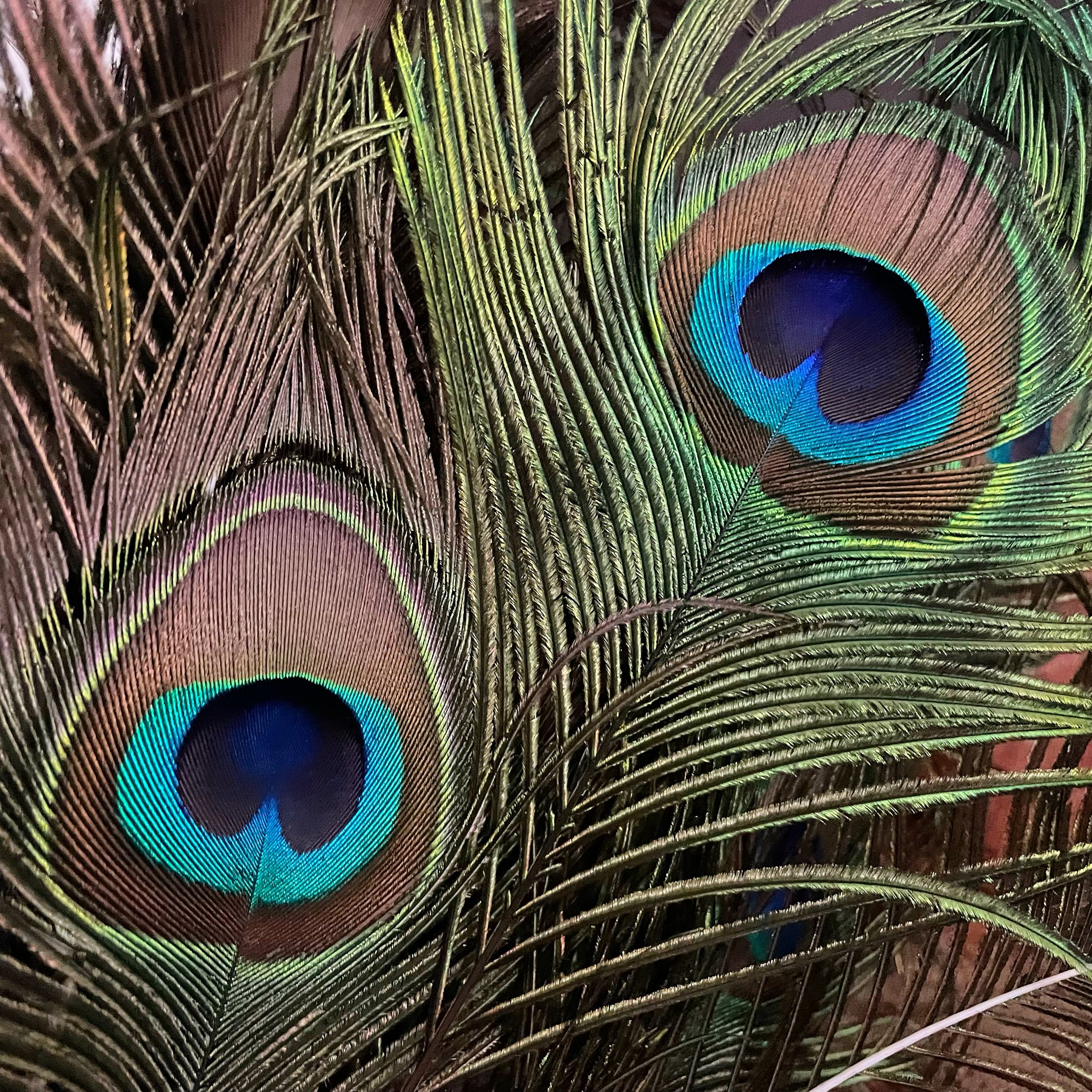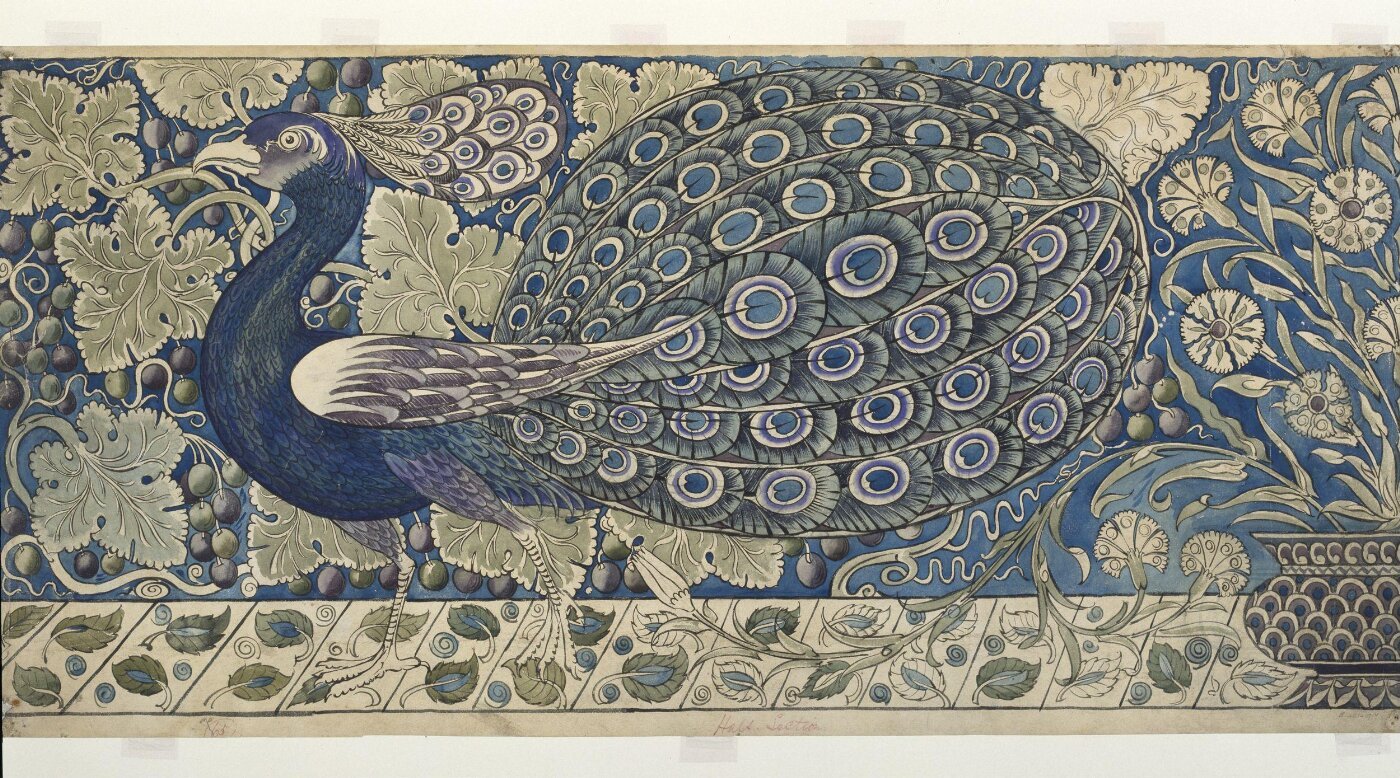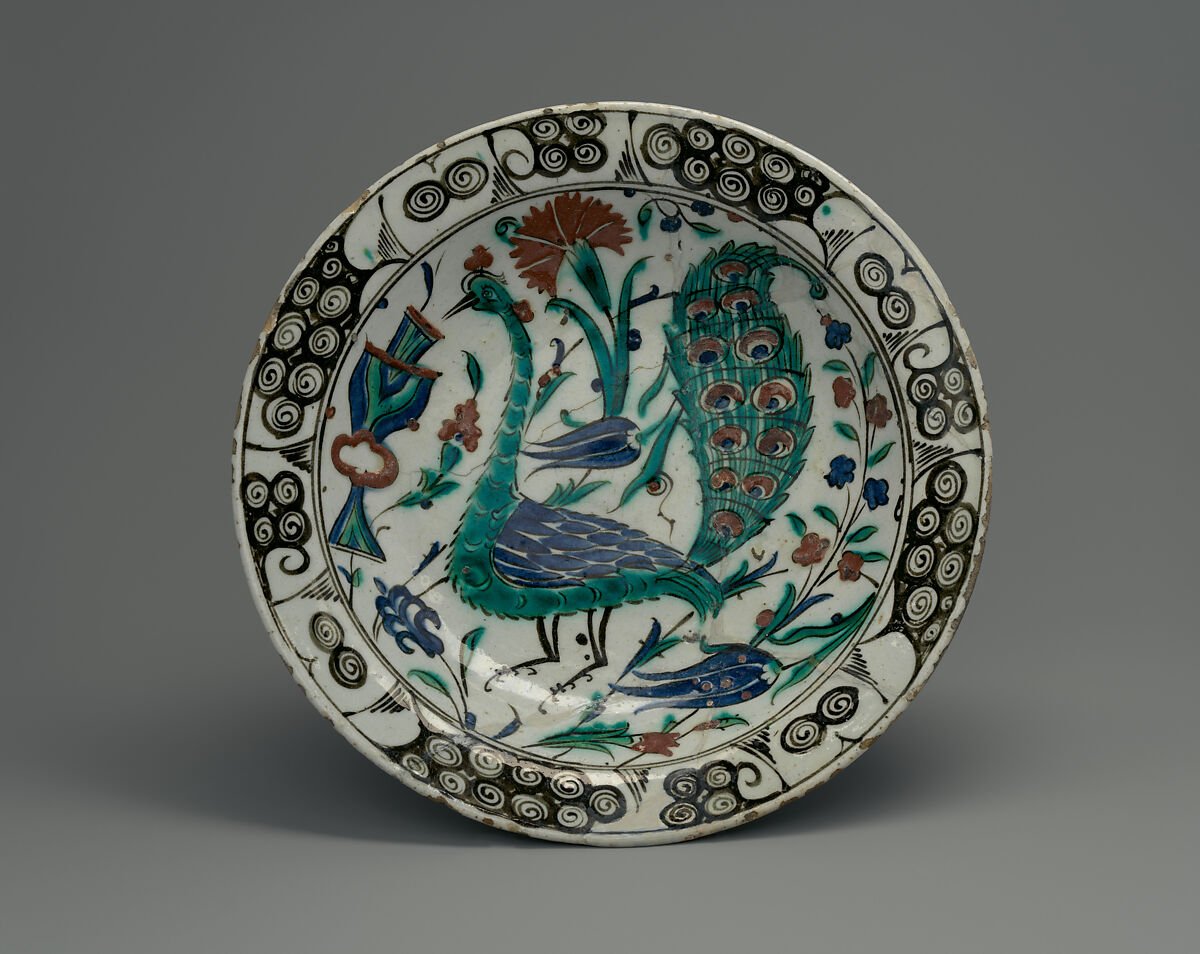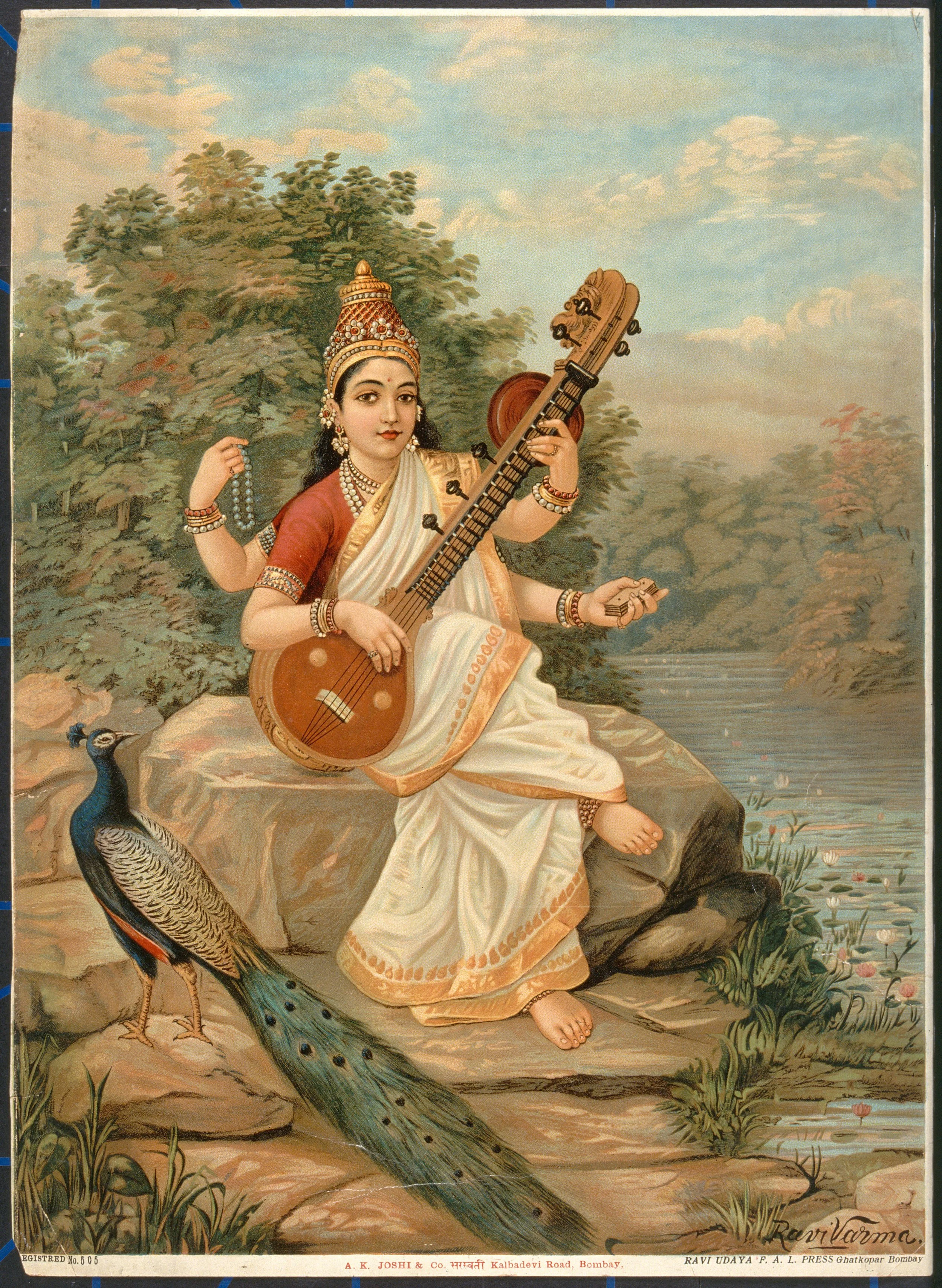Are peacock feathers bad luck ?
Birds (and other flying creatures like bats and dragons) seem to stir up strong feelings that can give rise to superstitions. Having previously conducted a brief geographical survey of places where owls are associated with good and bad luck, let us now explore another bird whose beautiful plumage evokes strong emotions — the peacock.
We’ll start with the basics…
Large and colorful, peacocks are part of the pheasant family. The male has an extravagant array of distinctly patterned, iridescent tail feathers, which it uses to attract a mate through elaborate courtship displays.
There are three species of peafowl: the Indian Peafowl, which is the most common and widespread species and is native to South Asia; the Green Peafowl, which is found in Southeast Asia; and the Congo Peafowl, which is found in central Africa.
Peafowl are omnivorous and feed on a variety of foods, including insects, small mammals, reptiles, and plant matter. They are often kept in captivity for their beauty and are sometimes bred for their meat, although consumption of peafowl is relatively rare in most modern cultures.
Peafowl have been admired for their striking appearance and are often used in art, literature, and culture as symbols of beauty, royalty, and pride.
Seriously, how could one not feel …something… when a peacock puts on this display??
Peacock displaying his beautiful plumage at The Fountain of Youth in St. Augustine, Florida; © The House of Good Fortune (2019).
Are Peacocks Good or Bad Luck?
As with dragons, there is a bit of an East/West divide when it comes to peacocks.
Perhaps because it is their native habitat, peacocks are viewed most positively in India, where they were declared the national bird in 1963. Peacocks are associated with the Hindu god Kartikeya, who is typically represented as a youthful man riding or standing near a peacock. The birds are also associated with other Hindu gods and goddesses, such as Lakshmi, Saraswati, and Lord Krishna. Peacock feathers are considered sacred and are often used in religious ceremonies to represent purity, prosperity, and good luck.
Painting depicting Karttikeya, c. 1850 ©Victoria & Albert Museum, London
Portrait of Shah Jahan on the Peacock Throne; 19th century; India; from the collection of The Metropolitan Museum of Art.
The “Peacock Throne” — so named for the pair of bejeweled peacocks featured on it — was an opulent golden, jewel encrusted throne that was taken from India by Persians. Today, the term “Peacock Throne” is used to refer generally to the Iranian monarchy.
Because peacocks kill and eat serpents, a belief developed in the East that drinking their blood or smoking their feathers would serve as an antidote to snake venom (similar to toadstones and bezoars, which you can read about here). But the peacock’s benign influence is not limited to Hinduism. In the Islamic world, peacocks were believed to ward off evil spirits. And in the Buddhist tradition, the peacock symbolizes purity and its “hundred-eyed tail” suggests infinite watchfulness.
Although some of the peacocks’ positive attributes, such as its association with royalty, spread to the West, the peacock also served as a symbol of vanity or pride, as evidenced by the saying “proud as a peacock” (pride being one of the seven deadly sins and all). So — believe it or not — peacocks and their feathers were the subjects of superstition and scorn in some Western cultures.
As is the case with many superstitions, the origins of these beliefs are not entirely clear, but let’s run through a few theories:
Association with the devil. One theory is that the superstition originated in Europe during the Middle Ages, when the peacock was associated with the devil, due to the bird's exotic appearance, its habit of eating snakes and insects, and the fact that its loud calls were sometimes compared to the screams of tortured souls in Hell. Because of this association, it was believed that bringing peacock feathers into the house could attract evil spirits or the devil himself.
BUT… as The House’s devoted readers know, it’s never that simple…
While it is true that the peacock was sometimes depicted as a symbol of sin and temptation in medieval Christian art, it is equally true that peacocks were symbols of immortality and resurrection.
Hildegard of Bingen, an influential 12th-century German abbess and mystic often described angels as having wings covered in peacock feathers, a detail that made its way into artistic depictions of angels (see, for example, The Annunciation by Fra Angelico). However, it is kind of a mixed bag because they were also used to decorate the devil's clothing or accessories (see, for example, The Last Judgment by Stefan Lochner). But remember…Lucifer was also an angel who was cast out of heaven so maybe that tracks?
Detail of The Annunciation by Fra Angelico, c. 1426 (c) Museo del Prado. Here, one can see the subtle depiction of the peacock’s “eyes” on Archangel Gabriel’s wing.
Detail of The Last Judgment, by Stefan Lochner. Created in the mid-15th century, the painting depicts the devil in a robe adorned with peacock feathers, as well as other luxurious fabrics and jewels. The use of peacock feathers in this context is meant to symbolize the devil's vanity and pride, as well as his association with earthly riches and material pleasures.
2. Greek Mythology. According to Greek mythology, the peacock got its eyes from Argus Panoptes, a hundred-eyed giant who was tasked with guarding Io, one of Zeus's many lovers. Argus was so vigilant that he could never sleep with all of his eyes at once, so Hera, Zeus's wife, sent Hermes to kill him. Hermes lulled Argus to sleep with his music and then killed him with a stone. Hera then took Argus's eyes and placed them on the tail of her favorite bird, the peacock. The peacock's tail is now said to represent Argus's vigilance and Hera's power/jealousy/wrath. Perhaps this is the origin of the superstition that it is unlucky for an unmarried woman to keep peacock feathers in their house because it will doom her to a life of spinsterhood?
3. The Evil Eye. Some believe that the circular parts of the peacock’s tail feathers resemble eyes. The idea that peacock feathers are harmful to children may have originated from a fear of the "evil eye" (malocchio or mal de ojo), which is a belief held in many cultures around the world. The "evil eye" is believed to be a curse or harmful energy that can be transmitted through a gaze, and it is often associated with envy or jealousy. In some cultures, it is believed that children are particularly vulnerable to the "evil eye," and that objects like peacock feathers, which are associated with beauty and attention, can attract this negative energy and harm the child. But… in India, China, and Japan, peacock feathers are welcomed into the home as an extra set of eyes to watch over the inhabitants and protect their homes from danger. Different strokes for different folks… A related theatrical superstition is that it is using peacock feathers as props or in costumes during a theatrical production will bring misfortune to the actors on stage.
Maybe it goes without saying, but The House is going to say it anyway — these beliefs are not backed by any scientific evidence. Ultimately, whether you believe that peacock feathers are good or bad luck will depend on your perspective and your cultural and spiritual traditions. The House keeps peacock feathers around because they are beautiful and The House vibes with the peacock’s positive associations.
Fun Facts About Peacocks
Peacocks are called pavos reales in Spanish, literally — “royal turkeys.”
The flabellum is a ceremonial fan made of peacock feathers or ostrich plumes that is used in Roman Catholic processions to drive any little insects away from the priest and blessed paraphernalia.
In Buddhism, white peacocks are said to symbolize nirvana. If you are lucky enough to see a white peacock, take it as a sign of good things to come. White peacocks are a reminder that there is beauty and hope in the world, even in the darkest of times.
Below are some beautiful examples of artwork featuring peacocks and their feathers.
Figure in porcelain painted with enamels and gilded of a peacock perched on a stump, Derby Porcelain Factory, Derby, ca. 1840.
©Victoria & Albert Museum, London
Brooch, c. 1900, by Charles Robert Ashbee ©Victoria & Albert Museum, London. The peacock was one of Ashbee's favorite and most distinctive motifs.
Kalaga or Burmese hanging of embroidered wool; late 19th century. Peacocks symbolized the sun, and were the national emblem of the Konbaung Kings (1752-1885).©Victoria & Albert Museum, London
Plate of tin-glazed earthenware painted in underglaze blue, 1804; ©Victoria & Albert Museum, London
Ms. Celine Dion impersonating a white peacock at the 2019 Met Gala in a headpiece made of singed peacock feathers. Nirvana indeed.
Sarasvati with her sitar and peacock. Chromolithograph by R. Varma. Wellcome Collection. Source: Wellcome Collection.
E.R. for Madame Handley-Seymour. "Peacock". Fancy dress costume. London, 1912-14. ©Victoria & Albert Museum, London
A peacock in a crowned alchemical flask; representing the stage in the alchemical process when the substance breaks out into many colours. Watercolour painting by E.A. Ibbs. Wellcome Collection. Source: Wellcome Collection.



















